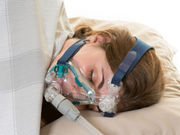Research suggests obstacles other than financial are primarily responsible for low uptake
FRIDAY, Oct. 30, 2015 (HealthDay News) — Among patients with severe obstructive sleep apnea (OSA), patient neighborhood income level is not significantly associated with purchase of continuous positive airway pressure (CPAP) device, and the overall rate of uptake remains low, according to a study published online Oct. 16 in the Annals of the American Thoracic Society.
Tetyana Kendzerska, M.D., Ph.D., from the University of Toronto, and colleagues examined the correlation between patient neighborhood income level and the purchase of a CPAP device under a cost-sharing health care insurance system. Data were included for all adults who underwent a first diagnostic sleep study between 2004 and 2010. Purchase of CPAP equipment was determined using patient data linked to provincial health administrative data.
The researchers found that 58 percent of the 695 participants with severe OSA and excessive daytime sleepiness purchased a CPAP device. The cumulative incidence of CPAP acceptance at six months was 43 and 52 percent for individuals in a low income neighborhood and combined higher income neighborhoods, respectively (P = 0.05). Living in higher income neighborhoods versus the lowest income neighborhood correlated with an increased chance of accepting CPAP, after adjustment for sex and age (hazard ratio, 1.27; P = 0.07).
“From the physician perspective, the CPAP acceptance rate may be improved by focusing on non-financial obstacles such as providing early education and support in patients with less severe disease to develop beliefs and expectations about OSA and CPAP,” the authors write.
Full Text (subscription or payment may be required)
Copyright © 2015 HealthDay. All rights reserved.








